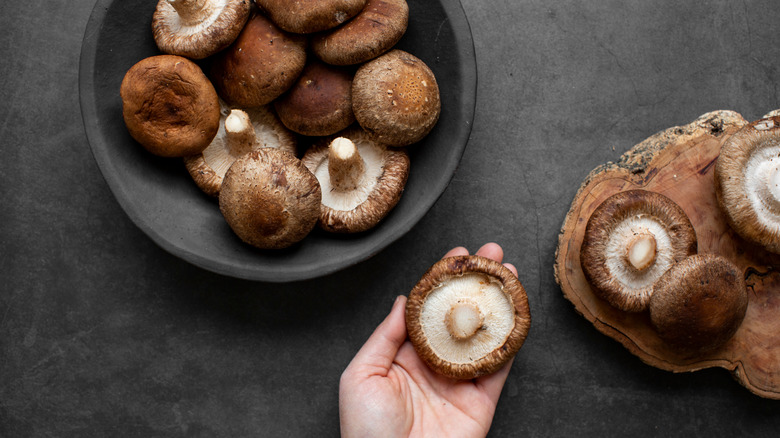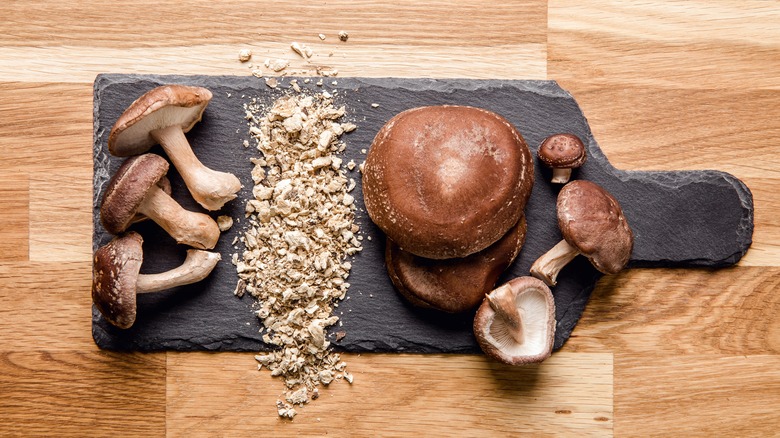Why You Should Save Your Shiitake Mushroom Stems
One of more than 2,000 varieties of edible mushrooms on Earth, and packed with nutrients, shiitake mushrooms are especially popular in Asian cuisine. With a wide, brown, umbrella-shaped cap and thin stems, shiitake mushrooms have an earthy and woody taste when raw; when cooked, they develop umami flavors that can enhance and elevate a number of dishes, from soups to stir fries to pizzas. Often sautéed, shiitake mushrooms can also be boiled, fried, grilled, roasted, or even microwaved, which turns out to be the most nutritious way to cook mushrooms.
When preparing shiitakes, MasterClass recommends first rinsing them under running water or wiping the caps with a damp paper towel before removing the stems, which are rather fibrous and therefore tough to eat, and then slicing the caps. Most people end up discarding the stems. However, there are several good reasons why you should be saving those shiitake mushroom stems instead.
Shiitake mushroom stems are rich in flavor and can be used in other dishes
According to Food52, if your shiitake mushrooms are very fresh, you can actually just eat the stems by finely chopping them before cooking. Place at the Table suggests using the shiitake stems to make a rich mushroom broth that can be used to flavor gravies, pan sauces, risottos, soups, and stews, and recommends dehydrating the stems first in either a dehydrator or convention oven for even richer and bolder flavors. The stems will still be too tough to eat in this case, so you'll want to either strain the broth, or use a cheesecloth to wrap around the shiitake stems for easy removal and disposal, advises The Kitchn, which also notes that shiitake stems can be "frozen indefinitely," so feel free to save the stems and freeze them until you are ready to use them.
Cookpad recommends drying out the shiitake stems first, and then finely grinding the dried-out stems in a food processor or spice grinder to use as "an umami seasoning" that "leaves a delicious aftertaste on the tongue." As a bonus, Umami Information Center notes that the drying process for shiitakes boosts the production of guanylate, which in turn enhances the umami taste of other ingredients in a dish. Alternatively, try using the shiitakes, stem and all, in a cocktail, like this umami hot whiskey toddy or this shiitake mushroom Manhattan.

